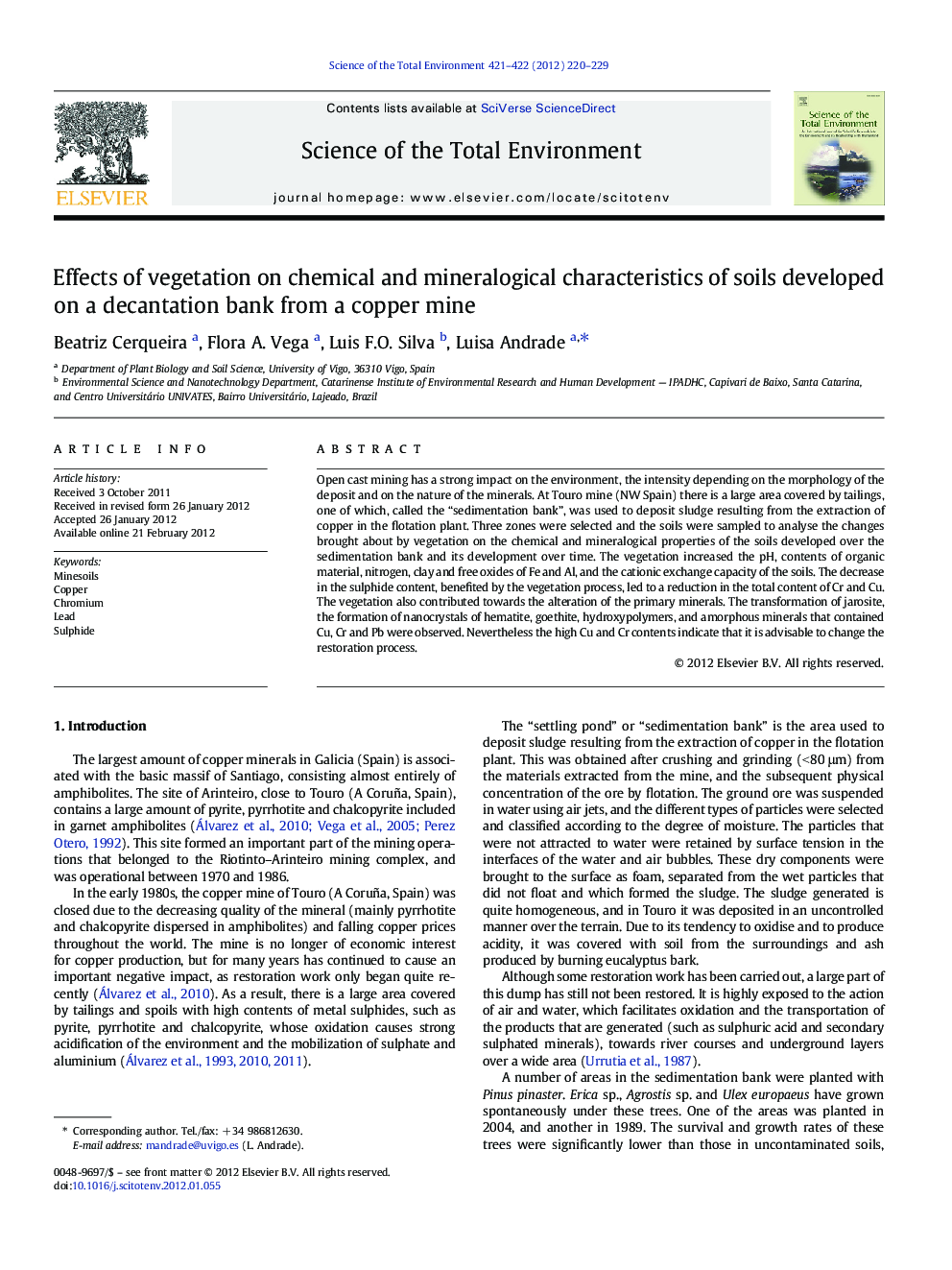| Article ID | Journal | Published Year | Pages | File Type |
|---|---|---|---|---|
| 4429599 | Science of The Total Environment | 2012 | 10 Pages |
Open cast mining has a strong impact on the environment, the intensity depending on the morphology of the deposit and on the nature of the minerals. At Touro mine (NW Spain) there is a large area covered by tailings, one of which, called the “sedimentation bank”, was used to deposit sludge resulting from the extraction of copper in the flotation plant. Three zones were selected and the soils were sampled to analyse the changes brought about by vegetation on the chemical and mineralogical properties of the soils developed over the sedimentation bank and its development over time. The vegetation increased the pH, contents of organic material, nitrogen, clay and free oxides of Fe and Al, and the cationic exchange capacity of the soils. The decrease in the sulphide content, benefited by the vegetation process, led to a reduction in the total content of Cr and Cu. The vegetation also contributed towards the alteration of the primary minerals. The transformation of jarosite, the formation of nanocrystals of hematite, goethite, hydroxypolymers, and amorphous minerals that contained Cu, Cr and Pb were observed. Nevertheless the high Cu and Cr contents indicate that it is advisable to change the restoration process.
► We studied the influence of vegetation on different properties of contaminated soils. ► There is a decrease in soils sulphide content as the age of the vegetation increased. ► Vegetation favours the transformation of minerals such as jarosite. ► Vegetation facilitates the formation of amorphous minerals containing Cu, Cr and Pb. ► The restoration plan must be changed because Cu and Cr soil contents are still high.
